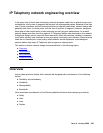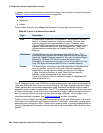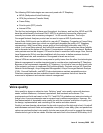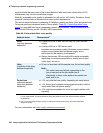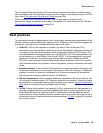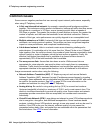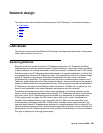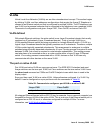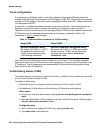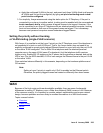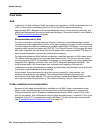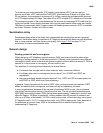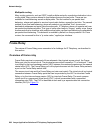
Issue 6 January 2008 289
Network design
This section discusses the network design process for IP Telephony. This section focuses on:
● LAN issues
● WAN
● VPN
● NAT
LAN issues
This section covers Local Area Network (LAN) issues, including speed and duplex, inline power,
hubs versus switches, and so on:
General guidelines
Because of the time-sensitive nature of IP Telephony applications, IP Telephony should be
implemented on an entirely switched network. Ethernet collisions, which are a major contributor
to delay and jitter, are virtually eliminated on switched networks. Additionally, the C-LAN, Media
Processor board, and IP Telephones should be placed on a separate subnetwork or VLAN (that
is, separated from other non-IP Telephony hosts). This separation provides for a cleaner design
where IP Telephony hosts are not subjected to broadcasts from other hosts, and where
troubleshooting is simplified. This separation also provides a routed boundary between the IP
Telephony segments and the rest of the enterprise network, where restrictions can be placed to
prevent unwanted traffic from crossing the boundary. When personal computers are attached to
IP Telephones, the uplink to the Ethernet switch should be a 100 Mbps link or greater, so that
there is more bandwidth to be shared between the telephone and the computer.
Sometimes enterprises are unable to follow these guidelines, and Avaya’s solutions can be
made to work in some less-than-ideal circumstances. If IP Telephones will share a subnetwork
with other hosts, the IP Telephones should be placed on a subnetwork of manageable size
(24-bit subnet mask or larger, with 254 hosts or less), with as low a rate of broadcasts as
possible. If the broadcast level is high, remember that 100-Mbps links are less likely to be
overwhelmed by broadcast traffic than 10-Mbps links. Perhaps a worst-case example is the
scenario where Avaya IP Telephones are deployed on a large subnetwork that is running IPX or
other broadcast-intensive protocol, with broadcasts approaching 500 per second. Although the
performance of the IP Telephones and the voice quality can be satisfactory in this environment,
this type of deployment is strongly discouraged.





